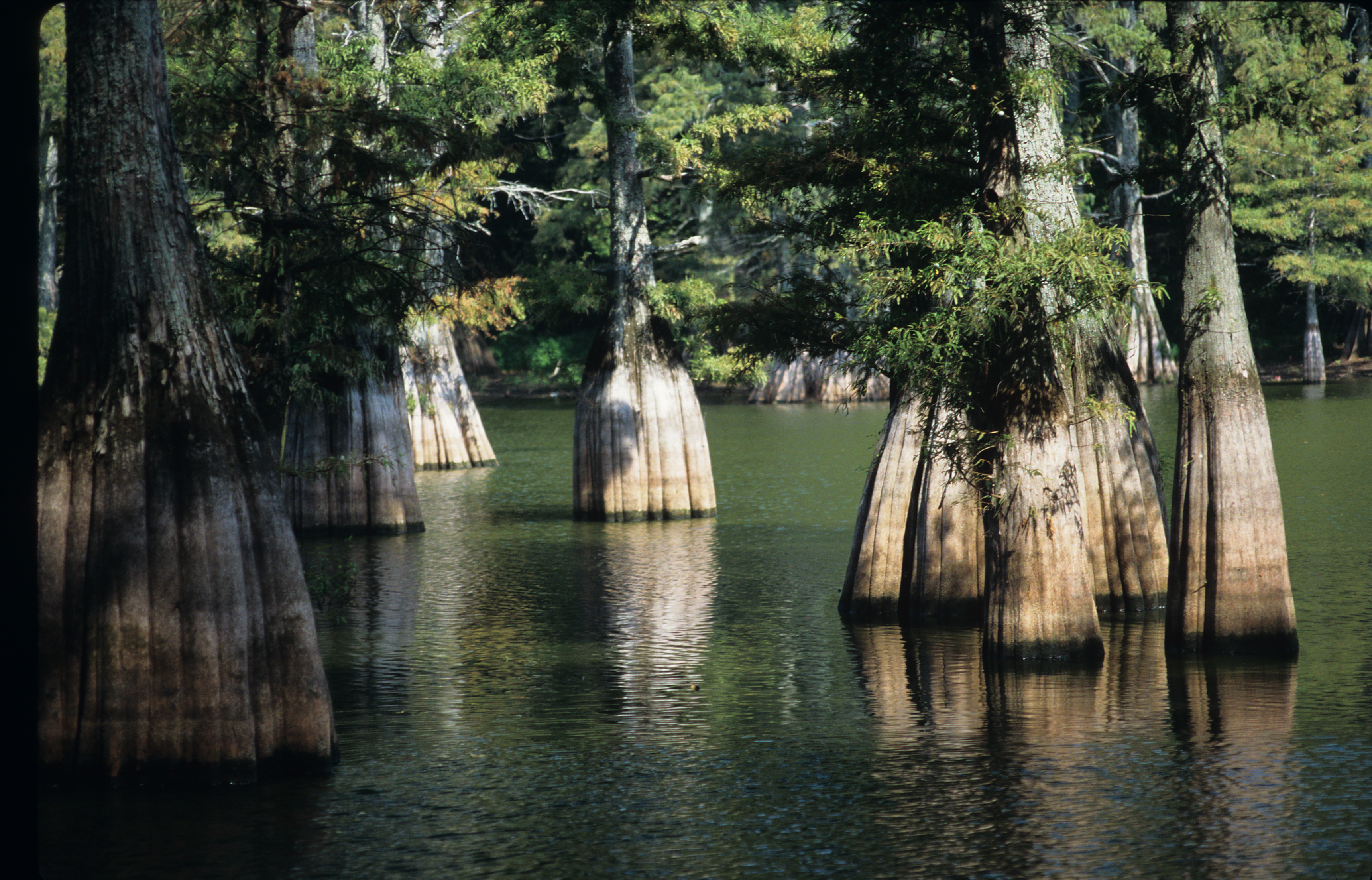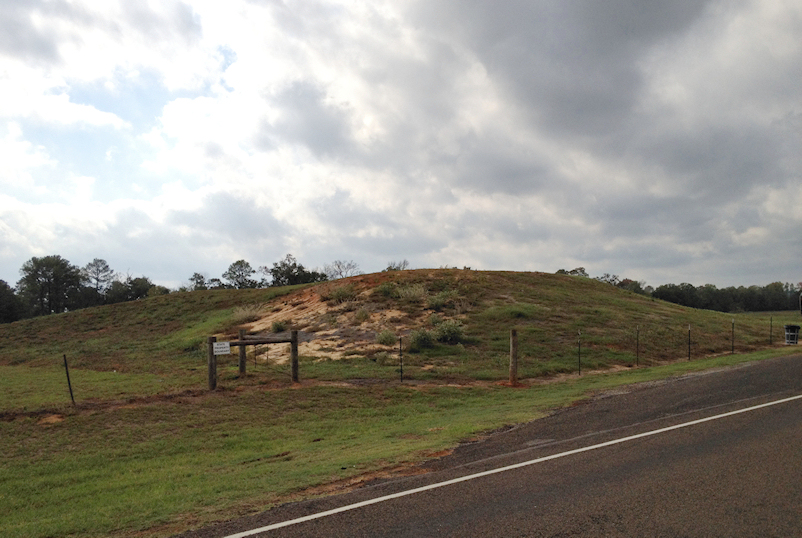|
Nechaui
The Nechaui were a Native American tribe from eastern Texas. Their name is thought to be derived from Nachawi, the Caddo language word for Osage orange.Nechaui Indians. ''Handbook of Texas Online.'' (retrieved 9 Sept 2009) History The Nechaui were part of the branch of the . During the late 17th and early 18th centuries, their principal village was located on the , in present-day |
Hasinai
The Hasinai Confederacy (Caddo: ) was a large confederation of Caddo-speaking Native Americans who occupied territory between the Sabine and Trinity rivers in eastern Texas. Today, their descendants are enrolled in the Caddo Nation of Oklahoma and the Natchitoches Tribe of Louisiana. Name The name ''Hasinai'' (with the variants ''Hasini'', ''Asenai'', ''Asinai'', ''Assoni'', ''Asenay'', ''Cenis'', ''Senis'', and ''Sannaye'') means "our own people" in Caddoan. The Spanish knew the Hasinai as the ''Tejas'' or ''Texas'', from a form of greeting meaning "friend", which gave the state of Texas its name. Government When the Spanish and the French encountered the Hasinai in the 1680s, they were a centrally organized chiefdom under the control of a religious leader, known as the Grand Xinesi. He lived in a secluded house and met with a council of elders. The chieftainship consisted of several subdivisions, which have been designated "cantonments". Each was under the control of a Cadd ... [...More Info...] [...Related Items...] OR: [Wikipedia] [Google] [Baidu] |
Caddo Confederacy
The Caddo people comprise the Caddo Nation of Oklahoma, a federally recognized tribe headquartered in Binger, Oklahoma. They speak the Caddo language. The Caddo Confederacy was a network of Indigenous peoples of the Southeastern Woodlands, who historically inhabited much of what is now East Texas, west Louisiana, southwestern Arkansas, and southeastern Oklahoma. Prior to European contact, they were the Caddoan Mississippian culture, who constructed huge earthwork mounds at several sites in this territory, flourishing about 800 to 1400 CE. In the early 19th century, Caddo people were forced to a reservation in Texas. In 1859, they were removed to Indian Territory. Government and civic institutions The Caddo Nation of Oklahoma was previously known as the Caddo Tribe of Oklahoma. The tribal constitution provides for election of an eight-person council, with a chairperson. Some 6,000 people are enrolled in the nation, with 3,044 living within the state of Oklahoma. ... [...More Info...] [...Related Items...] OR: [Wikipedia] [Google] [Baidu] |
Caddo Nation Of Oklahoma
The Caddo people comprise the Caddo Nation of Oklahoma, a federally recognized tribe headquartered in Binger, Oklahoma. They speak the Caddo language. The Caddo Confederacy was a network of Indigenous peoples of the Southeastern Woodlands, who historically inhabited much of what is now East Texas, west Louisiana, southwestern Arkansas, and southeastern Oklahoma. Prior to European contact, they were the Caddoan Mississippian culture, who constructed huge earthwork mounds at several sites in this territory, flourishing about 800 to 1400 CE. In the early 19th century, Caddo people were forced to a reservation in Texas. In 1859, they were removed to Indian Territory. Government and civic institutions The Caddo Nation of Oklahoma was previously known as the Caddo Tribe of Oklahoma. The tribal constitution provides for election of an eight-person council, with a chairperson. Some 6,000 people are enrolled in the nation, with 3,044 living within the state of Oklahoma. [...More Info...] [...Related Items...] OR: [Wikipedia] [Google] [Baidu] |
Native Americans In The United States
Native Americans, also known as American Indians, First Americans, Indigenous Americans, and other terms, are the Indigenous peoples of the mainland United States ( Indigenous peoples of Hawaii, Alaska and territories of the United States are generally known by other terms). There are 574 federally recognized tribes living within the US, about half of which are associated with Indian reservations. As defined by the United States Census, "Native Americans" are Indigenous tribes that are originally from the contiguous United States, along with Alaska Natives. Indigenous peoples of the United States who are not listed as American Indian or Alaska Native include Native Hawaiians, Samoan Americans, and the Chamorro people. The US Census groups these peoples as " Native Hawaiian and other Pacific Islanders". European colonization of the Americas, which began in 1492, resulted in a precipitous decline in Native American population because of new diseases, wars, ethni ... [...More Info...] [...Related Items...] OR: [Wikipedia] [Google] [Baidu] |
Caddo Language
Caddo is a Native American language, the traditional language of the Caddo Nation. It is critically endangered, with no exclusively Caddo-speaking community and only 25 speakers as of 1997 who acquired the language as children outside school instruction. Caddo has several mutually intelligible dialects. The most commonly used dialects are Hasinai and Hainai; others include Kadohadacho, Natchitoches and Yatasi. Linguistic connections Caddo is linguistically related to the members of the Northern Caddoan language family; these include the Pawnee-Kitsai (Keechi) languages (Arikara, Kitsai, and Pawnee) and the Wichita language. Kitsai and Wichita are now extinct, and Pawnee and Arikara each have fewer surviving speakers than Caddo does.Native Languages of the Americas, 2011 Another language, Adai, is postulated to have been a Caddoan language while it was extant, but because of scarce resources and the language's extinct status, this connection is not conclusive, and Adai is gene ... [...More Info...] [...Related Items...] OR: [Wikipedia] [Google] [Baidu] |
Maclura Pomifera
''Maclura pomifera'', commonly known as the Osage orange ( ), is a small deciduous tree or large shrub, native to the south-central United States. It typically grows about tall. The distinctive fruit, a multiple fruit, is roughly spherical, bumpy, in diameter, and turns bright yellow-green in the fall. The fruits secrete a sticky white latex when cut or damaged. Despite the name "Osage orange", it is not related to the orange. It is a member of the mulberry family, Moraceae. Due to its latex secretions and woody pulp, the fruit is typically not eaten by humans and rarely by foraging animals. Controversial suggestions have been made that it was consumed by extinct Pleistocene megafauna, but these claims have been criticised as lacking empirical evidence. ''Maclura pomifera'' has many names, including mock orange, hedge apple, hedge, horse apple, monkey ball, monkey brains and yellow-wood. The name bois d'arc (from French meaning "bow-wood") has also been corrupted into ''bodar ... [...More Info...] [...Related Items...] OR: [Wikipedia] [Google] [Baidu] |
Neches River
The Neches River () begins in Van Zandt County west of Rhine Lake and flows for through the piney woods of east Texas, defining the boundaries of 14 counties on its way to its mouth on Sabine Lake near the Rainbow Bridge. Two major reservoirs, Lake Palestine and B. A. Steinhagen Reservoir are located on the Neches. The Angelina River (containing Sam Rayburn Reservoir) is a major tributary with its confluence at the north of Lake B. A. Steinhagen. Tributaries to the south include Village Creek and Pine Island Bayou, draining much of the Big Thicket region, both joining the Neches a few miles north of Beaumont. Towns and cities located along the river including Tyler, Lufkin, and Silsbee, although significant portions of the Neches River are undeveloped and flow through protected natural lands.Phillips, Bob, (foreword). 2008. The Roads of Texas. MAPSCO Inc. Addison, Texas. 176 pp. In contrast, the lower 40 miles of the river are a major shipping channel, highly industria ... [...More Info...] [...Related Items...] OR: [Wikipedia] [Google] [Baidu] |
Cherokee County, Texas
Cherokee County is a county located in the U.S. state of Texas. As of the 2020 census, its population was 50,412. The county seat is Rusk, which lies 130 miles southeast of Dallas and 160 miles north of Houston. The county was named for the Cherokee, who lived in the area before being expelled in 1839. Cherokee County comprises the Jacksonville micropolitan statistical area, which is also included in the Tyler–Jacksonville combined statistical area. History Native Americans The Hasinai group of the Caddo tribe built a village in the area in around AD 800 and continued to live in the area until the 1830s, when they migrated to the Brazos River. The federal government moved them to the Brazos Indian Reservation in 1855 and later to Oklahoma. The Cherokee, Delaware, Shawnee, and Kickapoo Native American peoples began settling in the area around 1820. The Texas Cherokee tried unsuccessfully to gain a grant to their own land from the Mexican government. Sam Houston, adopt ... [...More Info...] [...Related Items...] OR: [Wikipedia] [Google] [Baidu] |
Nacono
The Nacono were a Native American tribe from eastern Texas. Today they are part of the Caddo Nation of Oklahoma, a federally recognized tribe in Oklahoma. History The Nacono were part of the Hasinai branch of the Caddo Confederacy.Sturtevant 616 They historically lived in villages along the Neches and Angelina Rivers, near present-day Cherokee and Houston Counties. Their environment includes mixed woodlands and savannas.Early 123 Early 18th century Spanish explorer Domingo Ramon recorded his observations of the Nocono in his 1716 Diary. He observed that the tribe lived near the San Francisco de los Neches Mission.Campbell, Thomas NNacono Indians.''Handbook of Texas Online.'' (retrieved 6 Sept 2009) Another Spanish explorer, Juan Antonio de la Pena wrote in 1721 that the Nacono village, that he called El Macono, was located five leagues below the Neches crossing. Together with 11 to 30 historical communities, including the Nadaco, the Hainai, and the Nacogdoche, the Nacono for ... [...More Info...] [...Related Items...] OR: [Wikipedia] [Google] [Baidu] |
Neche Tribe
The Neche were a Native American tribe from eastern Texas.Sturtevant, 617 History The Neche were part of the Hasinai branch of the Caddo Confederacy. During the late 17th and early 18th centuries, they settled along the Neches River, in present day Houston and Cherokee Counties.Neche Indians. ''Handbook of Texas Online.'' (retrieved 14 Sept 2009) Their lands were directly northwest of the tribe. In 1779 Spanish explorer Athanase de Mezieres Mezières recorded seeing several in Neches territory. He wrote that the mounds were created by the local Indians, "in ... [...More Info...] [...Related Items...] OR: [Wikipedia] [Google] [Baidu] |
Spanish Missions In Texas
The Spanish Missions in Texas comprise a series of religious outposts established by Spanish Catholic Dominicans, Jesuits, and Franciscans to spread the Catholic doctrine among area Native Americans, but with the added benefit of giving Spain a toehold in the frontier land. The missions introduced European livestock, fruits, vegetables, and industry into the Texas area. In addition to the ''presidio'' (fortified church) and ''pueblo'' (town), the ''misión'' was one of the three major agencies employed by the Spanish crown to extend its borders and consolidate its colonial territories. In all, twenty-six missions were maintained for different lengths of time within the future boundaries of the state of Texas. Since 1493, Spain had maintained missions throughout New Spain (Mexico and portions of what today are the southwestern United States) to facilitate colonization. The eastern Tejas missions were a direct response to fear of French encroachment when the remains of La ... [...More Info...] [...Related Items...] OR: [Wikipedia] [Google] [Baidu] |
Caddoan Peoples
The Caddoan languages are a family of languages native to the Great Plains spoken by tribal groups of the central United States, from present-day North Dakota south to Oklahoma. All Caddoan languages are critically endangered, as the number of speakers has declined markedly due to colonial legacy, lack of support, and other factors. Family division Five languages belong to the Caddoan language family: Kitsai and Wichita have no speakers left. Kitsai stopped being spoken in the 19th century when its members were absorbed into the Wichita tribe. Wichita stopped being spoken in 2016, when the last native speaker of Wichita, Doris McLemore (who left recordings and language materials), died. All of the remaining Caddoan languages spoken today are severely endangered. As of 2007, Caddo is spoken by only 25 people, Pawnee by 10, and Arikara by 10. Caddo and Pawnee are spoken in Oklahoma by small numbers of tribal elders. Arikara is spoken on the Fort Berthold Reservation in North D ... [...More Info...] [...Related Items...] OR: [Wikipedia] [Google] [Baidu] |
_(14780531541).jpg)






